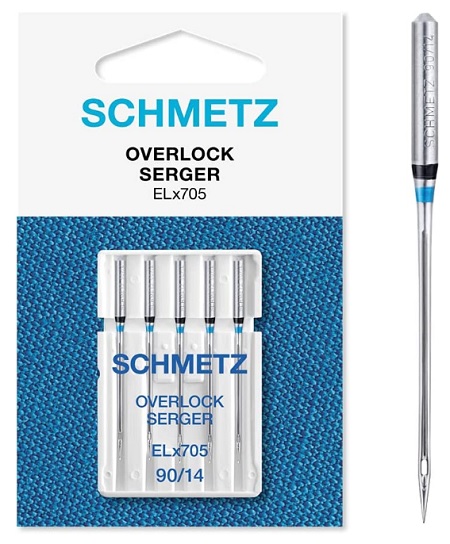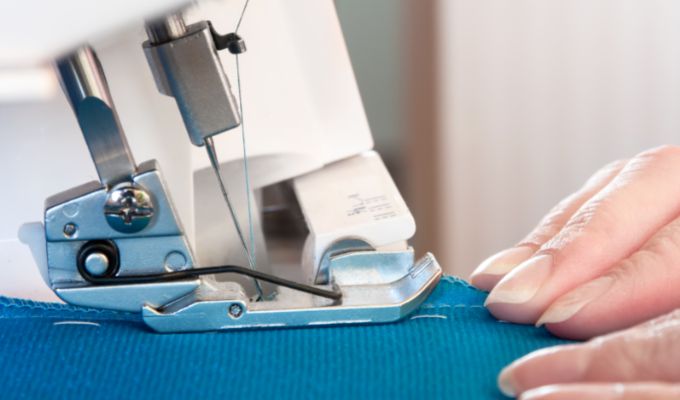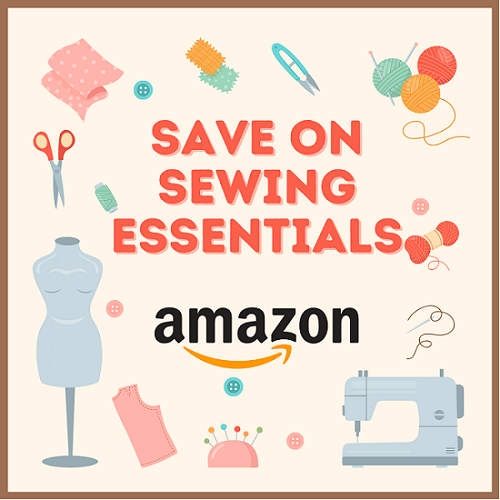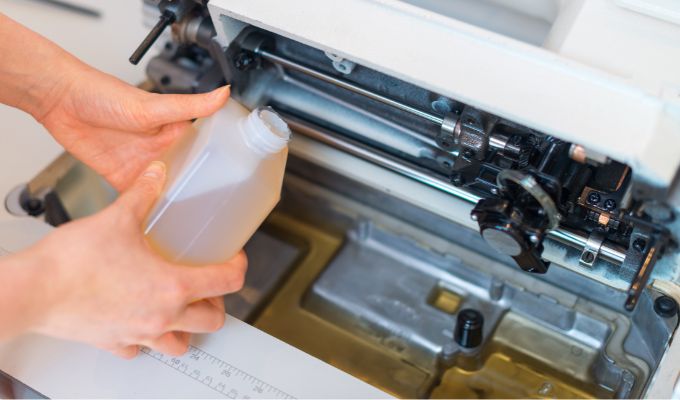You will notice that there are sewing machine needles marketed as only being compatible with overlockers. It’s true that some needles only work on an overlocker and not on sewing machines, but there are also universal needles (130/705 or 130/705 ) that fit both household sewing machines and overlockers.
The needle(s) in an overlocker must be in good condition, with no bent or broken tips. Overlocker needles wear out more quickly than sewing machine needles because of the higher speeds they can reach, and should be changed often. For the best results, go with needles manufactured specifically for use with an overlocker, as follows.
Needles for Overlockers
A second thread groove is commonly found on overlocker needles, and the needle shaft is reinforced to withstand the machines’ quicker sewing speed. The tip is likewise rounded slightly.
Overlock needles are specifically coated, sometimes with chrome, to ensure that they survive as long as feasible with smooth operation. In the machine’s instruction and maintenance manual, you should find information regarding which needles are recommended for your machine model – always start looking there when it’s time to change needles.
In terms of the ideal fitting needle for your overlocker, choose between the ELx705 CF and the ELx705 SUK CF.

As I mentioned, overlockers can use universal, ballpoint size 130/705 H or 130/705 H-SUK, or HAx1 SP super stretch needles. With that said, for optimal results, go with Schmetz ELx705 as these needles are designed to work specifically with overlockers, not regular sewing machines.
It’s a common misconception that the machine will be harmed by using needles marked EL, which is incorrect. EL does not mean “extra long”, as some people believe, it’s short for Elna, which is a branded overlocker sewing machine that this type of needle was originally designed for.
The dimensions of this needle are identical to those of the universal 130/705, making them perfect for overlockers.
They’re designed with a strengthened blade and a v-shaped groove on both the front and rear to facilitate the creation of sturdy chain stitches. The acronym “CF” stands for “Chromed finish”, so you know the needle will glide nicely. The quality of your stitches from your overlocker machine will noticeably improve when you switch to these sharp reinforced chrome needles.
Super Stretch Needle system: HAx1 SP
Incredibly elastic materials can now be stitched with ease thanks to these specially designed needles. The needle’s flat shank brings it in close proximity to the bobbin hook. A larger thread loop is more easily caught by the hook, and this is made possible by a unique scarf design.
The chrome coating, in place of nickel, is more resistant to abrasion, and the stronger shaft lessens the chance of breakage and facilitates a straight stitch.
An eye that is both larger in diameter and shorter in length makes it possible to employ thicker threads. The extra-long needle threads easily through any sewing machine. Janome suggests fitting HAx1 SP needles for their overlocker machines. If your overlocker is skipping stitches, consider using SUK, stretch, or super stretch needles instead of universal tip needles.
Singer Brand Needles for Sergers
A common urban legend states that only Singer-branded needles, which are 1mm longer, may be used in Singer sewing machines and overlockers. Of course, it’s commonplace for brands to say that only their needles should be used, after all, needles are a way for them to make recurring sales,
But this is not the case, as there is now standard size for the length of needles used in sewing machines. For example, if you look at the packaging of Singer universal and ballpoint needles (coded 2020 and 2045), you see 130/705H marked on there, and as we discussed, 130/705H fits any overlocker.
Singer overlocker needles (model number 2022) also have the code ELx705 printed on the box. Again, this size is suitable for a serger.
Threading An Overlocker Needle
Most sewers despise having to thread the needle of an overlocker. When you add in the fact that there are now two needles and four threads to manage, you can see how this task quickly becomes more involved than threading a sewing machine. Even though overlockers have two needles, not every stitch requires both.
In addition, many overlockers require threading in a specific order, which may be learned only with plenty of experience and a night or two spent reading the handbook before bed.
One helpful hint is to label the top of the overlocker with numbers 1–4 next to the holes where the threads enter and exit for each needle and looper. Tweezers are another useful tool that will become your new best friend when it comes to picking up threads from places your fingers can’t reach.
Today’s machines are much simpler to thread and operate than their predecessors. Currently, the mechanism itself is marked and diagrammed with various colours to facilitate understanding.
If you take your time, read the instructions carefully, and use the diagrams, you won’t have too much trouble. Eventually, you’ll be able to do it in under a minute with just a little bit of practice. The lower looper thread must be placed on top of the upper looper thread at the end of the process for the machine to create a chain.
How Often to Change Overlocker Sewing needles
After 8-10 stitched garments (or 8 – 10 hours of use), you should think about changing the needle. It may be less frequent to switch needles while using a serger because the thread does not re-thread itself as it passes through the eye. Whenever your overlocker starts skipping, the needle should be replaced.




